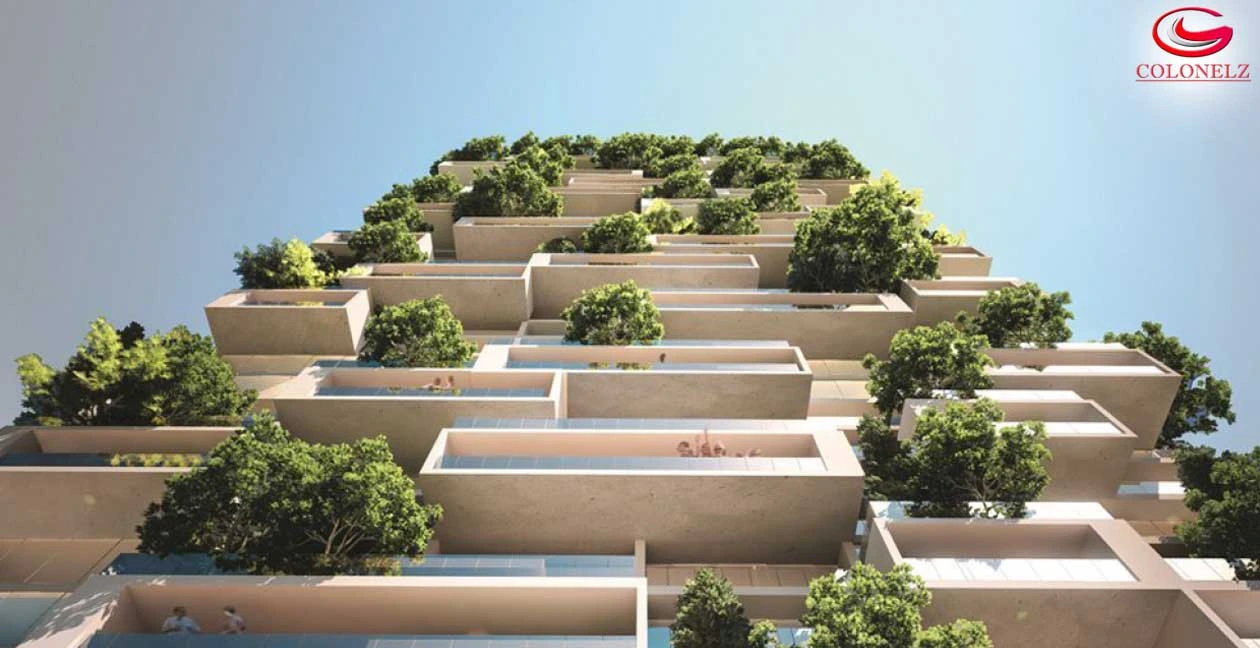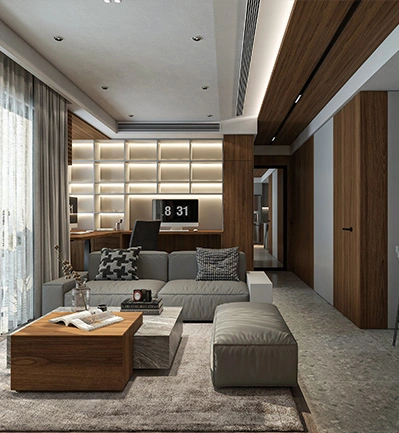What is Green Building? Green building, or sustainable design, is the practice of increasing the efficiency with which buildings and their sites use energy, water, and materials, while reducing the negative impacts of the building on human health and the environment over the entire life cycle of the building. Green building concepts extend beyond the walls of buildings and should include siting, design, construction, operation, maintenance, renovation, and demolition; as also, community and land use planning as well.
There are numerous ways to make your buildings more Eco friendly. We list a few below
Sustainable Site Selection:
Easy availability of public transport/ Mass Transit system and conveniences helps cut down energy consumption for transportation. Rehabilitation of sites damaged by environmental contamination is a better option than any new piece of land where large amount of energy and resource is needed to make the land worthy of building on, thus saving large amount of energy.
It is very important to protect the existing Flora & Fauna, the soil and natural features. Avoid hard paving on the site to preserve top soil and ease rain water harvesting. There should be minimum storm water runoff.
Sustainable Building Components / Material
Material which can be recycled, have low toxicity, nil / low harmful air emissions, as also, have a long shelf life are better. Planning the Building’s structure and dimension can reduce the construction costs. Construction and demolition material can be reused and recycled for landfills. Proper planning for managing materials through deconstruction, demolition and construction is done.
Using renewable materials like bamboo flooring, wool carpets, straw board, cotton ball insulation (made from denim scrap) is good. Locally available materials must be given priority; Saves transportation costs. Alternative materials that can be generated from waste with lesser energy is used over conventional building materials, e.g. alternative materials for timber, like MDF board, Mica Laminates and Veneers on composite boards should be used instead of natural timber.
Industrial waste based bricks and blocks, aerated lightweight BPC concrete blocks, can be used for masonry structures and Fly ash, for bricks, outdoor paving and in concrete.
Solar Energy
Indian Govt is giving numerous subsidies, including sharing of Solar energy generated in the Grid so that excess energy generated during day can be bartered for energy at night, thus being economically efficient, as also environment friendly.
Water Efficiency
Installation of water efficient or low flow equipment in kitchens and bathrooms to reduce water consumption is very important. Newly designed Vapor generating taps save 80% water while being as efficient.
- Incorporating waste water management technologies like dual plumbing for using recycled water in toilet flushing or using water conserving fixtures such as low flow shower heads, self closing nozzles on hoses, water closets with dual flush options.
- Use of Micro irrigation techniques at sites instead of high pressure sprayers.
- Re circulation system for centralized hot water distribution.
- For landscaping purpose, local plants and trees are used as they consume less water.
- Provisions for reusing and recycling water are made to ensure efficient water management.
- Using treated waste water, non potable water for site irrigation. Raw sewage can be recycled using aquatic plants like duckweed and water hyacinth to produce clean water suitable for re-use in irrigation and industry.
- Integrating Rain water harvesting system in building design to ensure maximum possible utilization of rain water.
1billion square foot building area has been certified as green by leading green building rating system LEED-INDIA.
There are two established Green Building rating system in India.
Some Green Building Projects in India
- Suzlon Energy Limited – Pune
- Biodiversity Conservation India – Bangalore
- Olympia Technology Park – Chennai
- ITC Green Centre – Gurgaon
- The Druk White Lotus Schoo l- Ladakh
- Doon School – Dehradun
- Raintree Hotels – Chennai
- Nokia – Gurgaon
- Rajiv Gandhi International Airport – Hyderabad
- Palais Royale at Worli – Mumbai
 Residential Turnkey
Residential Turnkey Residential Design Consultation
Residential Design Consultation Residential Construction
Residential Construction Commercial Turnkey
Commercial Turnkey Commercial Construction
Commercial Construction Workspaces & Offices
Workspaces & Offices Architectural Turnkey
Architectural Turnkey Architectural Consultation
Architectural Consultation Retail & Hospitality
Retail & Hospitality


68636558549410963876.webp)


